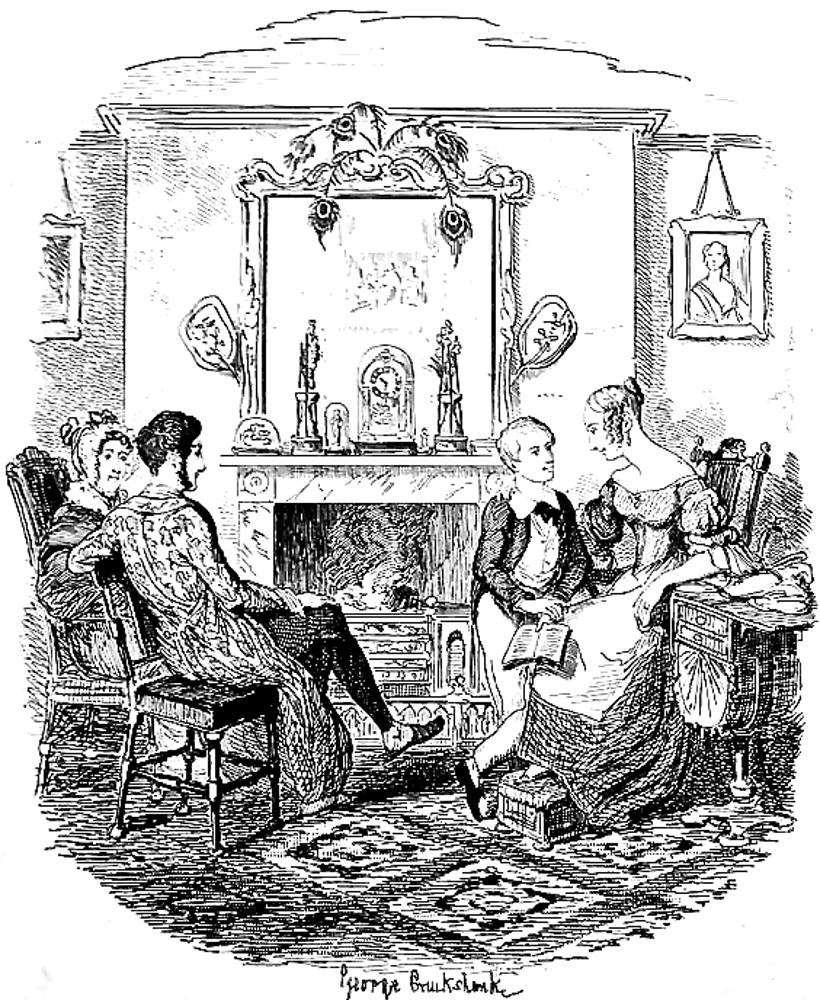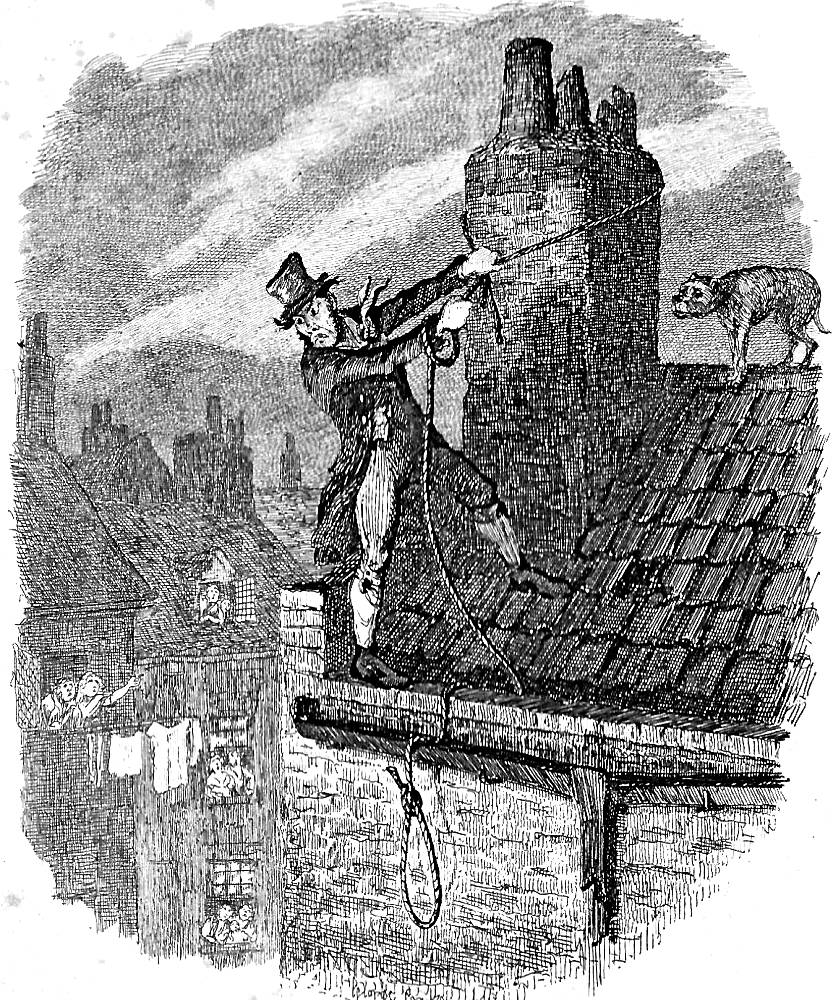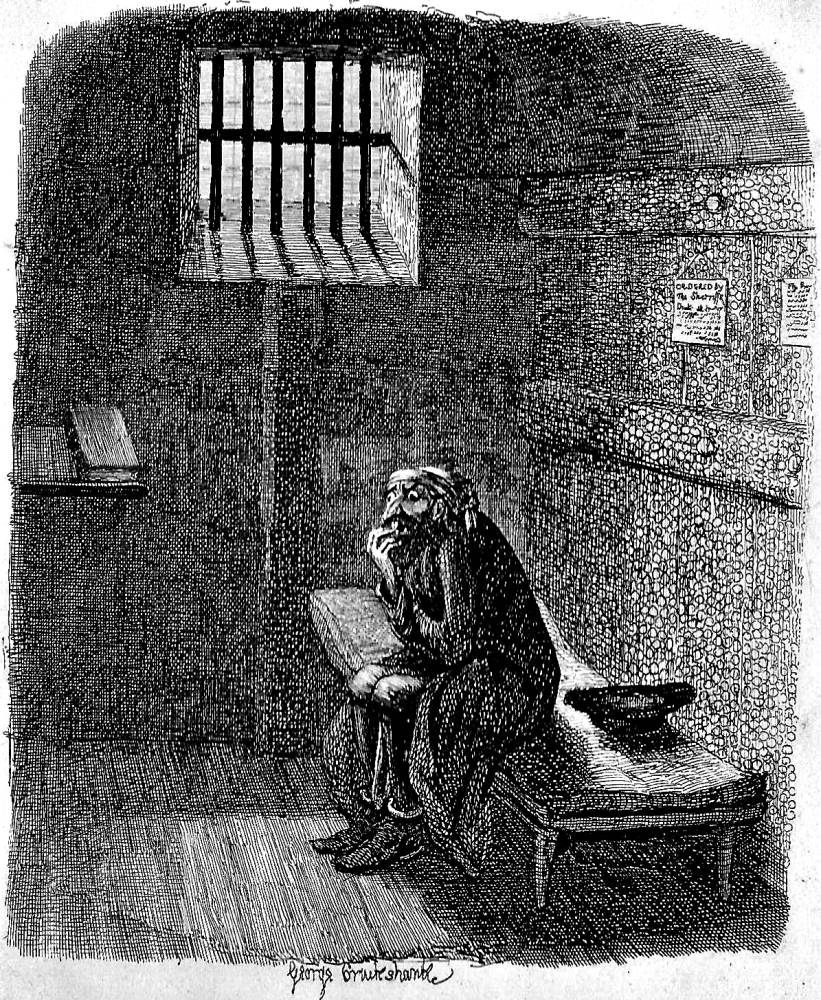Rose Maylie tends Oliver
Harold Copping
1893, rpt. 1924
Line drawing
11 cm by 10.3 cm (4 ½ by 4 ⅛ inches), vignetted
From Children's Stories from Dickens, p. 39.
[Click on image to enlarge it.]
Scanned image and text by Philip V. Allingham.
[Victorian Web Home —> Visual Arts —> Illustration —> Harold Copping —> Next]
Rose Maylie tends Oliver
Harold Copping
1893, rpt. 1924
Line drawing
11 cm by 10.3 cm (4 ½ by 4 ⅛ inches), vignetted
From Children's Stories from Dickens, p. 39.
[Click on image to enlarge it.]
Scanned image and text by Philip V. Allingham.
[You may use this image without prior permission for any scholarly or educational purpose as long as you (1) credit the person who scanned the image, and (2) link your document to this URL in a web document or cite the Victorian Web in a print one.]
When Oliver awoke he told them all his strange history, but was often compelled to stop by pain and want of strength.
It was a solemn thing to hear, in the darkened room, the feeble voice of the sick child recounting a weary catalogue of evils and calamities which hard men had brought upon him.
Oliver's pillow was smoothed by women's hands that night, and loveliness and virtue watched him as he slept.
And this, let me tell you, was the end of the poor boy's troubles. It is a very strange thing to have to relate, but the pretty Rose Maylie turned out to be Oliver's aunt - his mother's own sister! From the moment he entered Mrs. Maylie's house his life was as happy as it had been miserable in the past. [Children's Stories from Dickens, 41]
The very Victorian operations of Poetic Justice strictly direct the conclusions of all plot threads in the original novel. However, Copping's narrative-pictorial sequence of the story ends abruptly. Fagin does not appear. No need to depict the fate of the notorious fence or his chief minion, Jack Dawkins, The Artful Dodger. And no need to have Nancy murdered and Bill Sikes fall to his death, trying to elude the police. Instead, Copping concludes with Oliver safely installed with the Maylies at Chertsey. This simplified children's version avoids all those terribly adult plot complications as Nemesis governs characters' fates. Copping's final illustration has a purely sentimental appeal for the Victorian child and the adult who reads the story aloud for his or her edification and entertainment.




Left: Cruikshank's revised culminating engraving, Oliver Twist with the Maylie Family; or, The Fireside Illustration (November 1838). Centre: Cruishank's revised offering: The memorial tablet to Agnes; or, The Church Plate (April 1839). Right of centre: Sikes's comeuppance: The last chance — The End of Sikes (November 1838). Right: Fagin suffers an anxious night before his execution in Cruikshank's celebrated Fagin in the Condemned Cell (November 1838). [Click on the images to enlarge them.]
Dickens, Charles. The Adventures of Oliver Twist. Illustrated by George Cruikshank. London: Bradbury and Evans; Chapman and Hall, 1846.
Dickens, Mary Angela, Percy Fitzgerald, Captain Edric Vredenburg, and Others. Illustrated by Harold Copping with eleven coloured lithographs. Children's Stories from Dickens. London: Raphael Tuck, 1893.
Matz, B. W., and Kate Perugini; illustrated by Harold Copping. Character Sketches from Dickens. London: Raphael Tuck, 1924. Copy in the Paterson Library, Lakehead University, Thunder Bay, Ontario, Canada.
Created 25 September 2023
